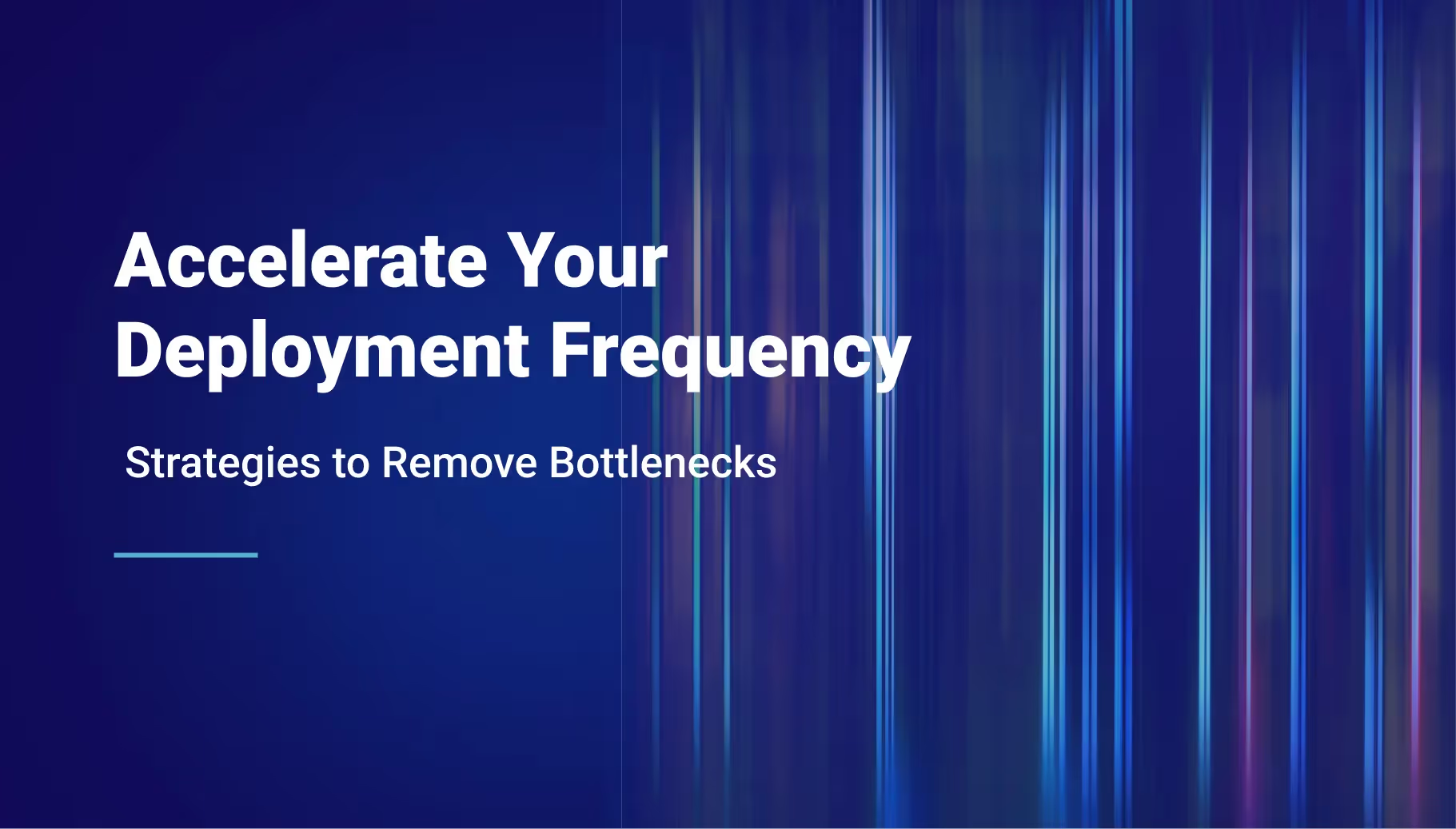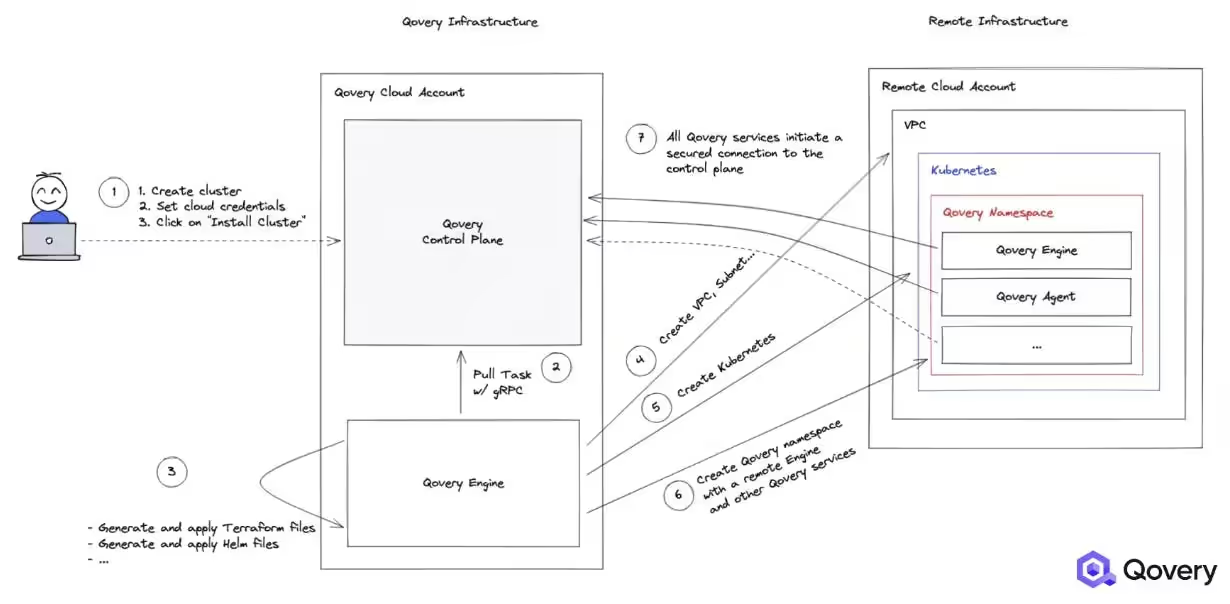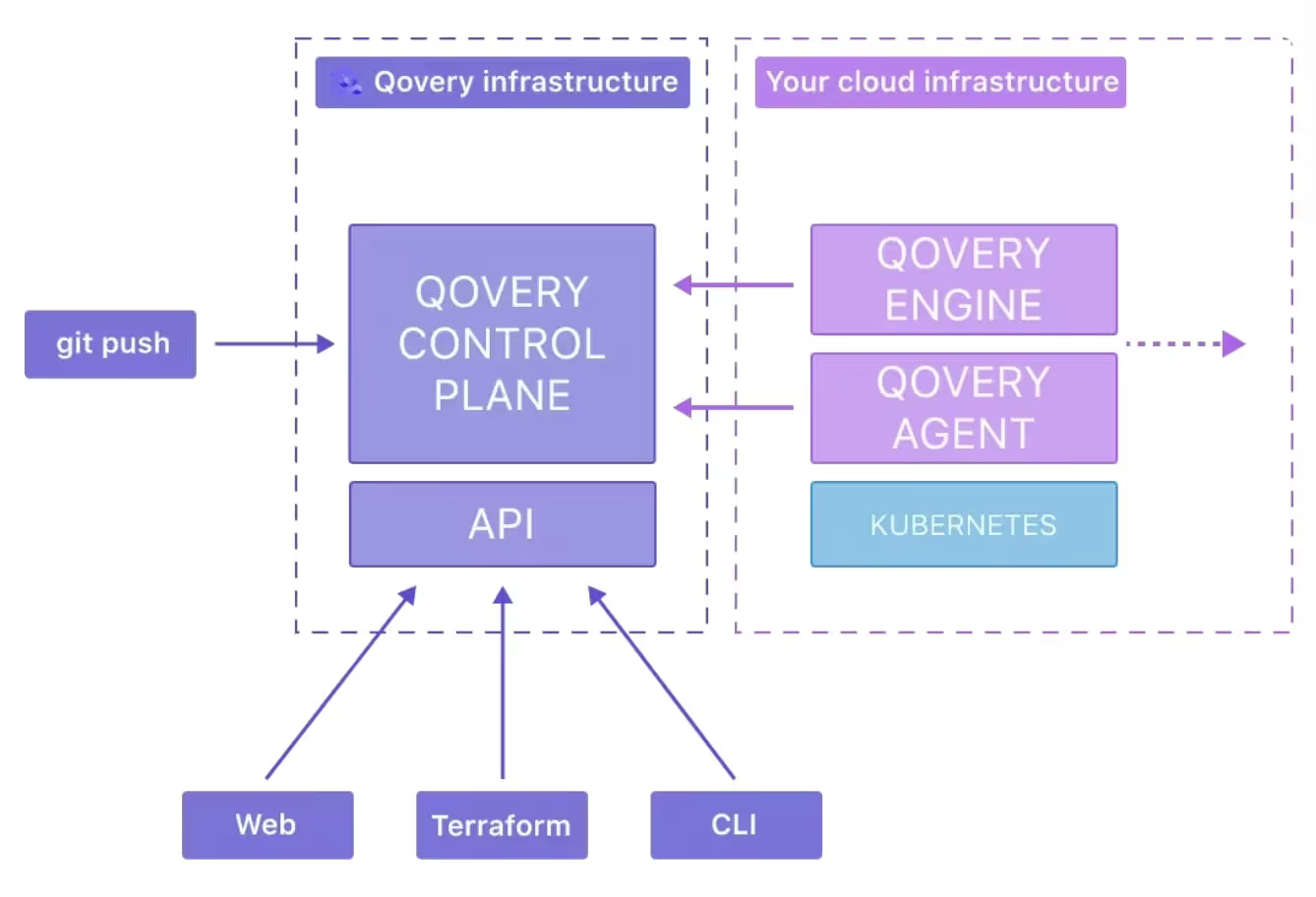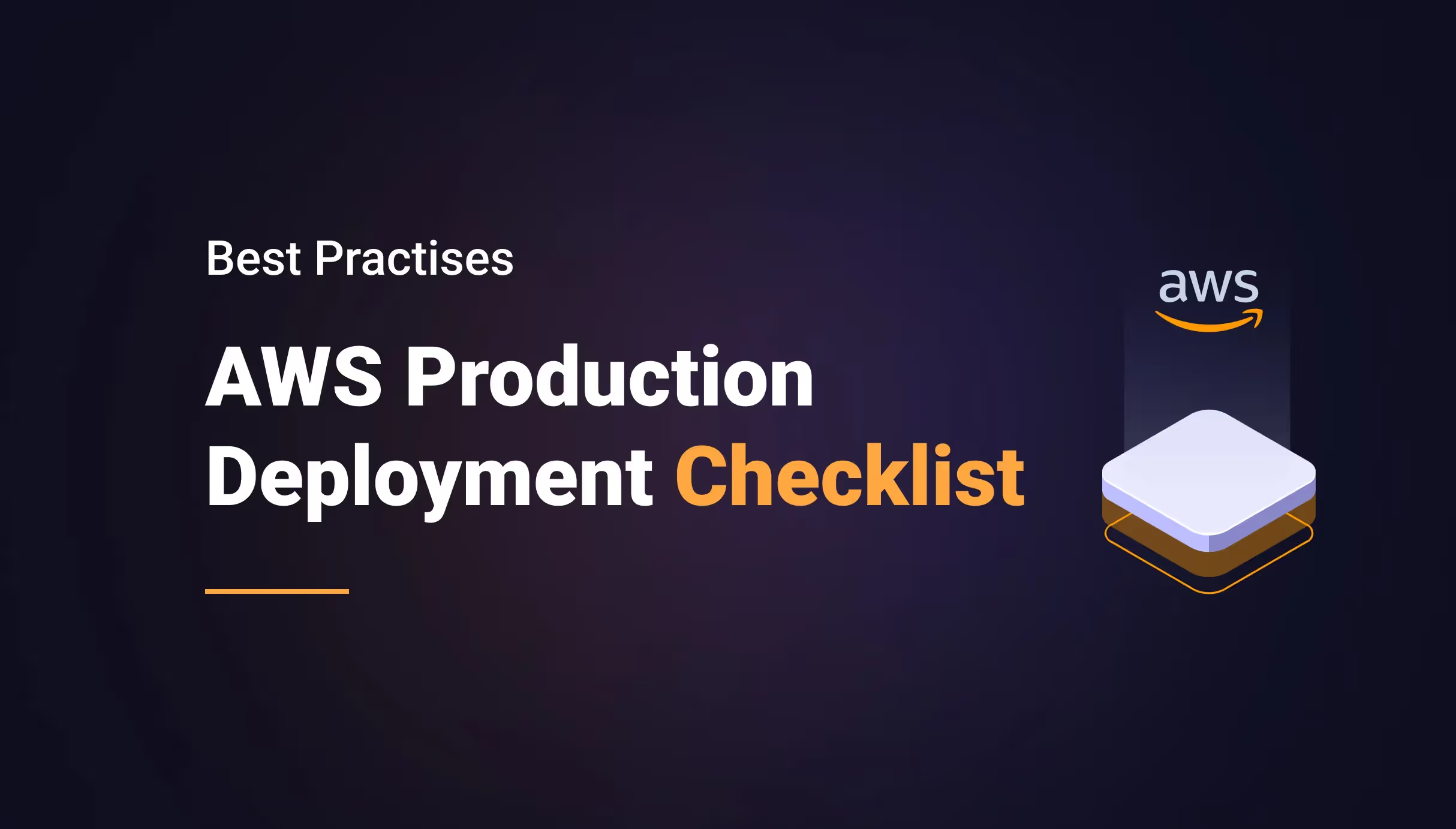

Deployment Frequency: Strategies to Increase It and How to Remove Bottlenecks



Key Points:
- Deployment frequency is vital for business agility, but mid-size organizations face significant bottlenecks due to manual processes, environment inconsistencies, and weak collaboration, hindering their ability to deliver value quickly.
- Accelerating deployments requires strategic shifts towards automation (CI/CD, IaC, ephemeral environments), improved processes (GitOps, self-service tools), and a strong DevOps culture.
- Qovery offers an automation-first platform that tackles these bottlenecks through abstracted infrastructure, excellent developer experience, and advanced environment management, enabling faster, more reliable deployments for growing companies.
What is deployment frequency and why does it matter?
Deployment frequency is a key metric for measuring engineering delivery efficiency. It represents the cadence at which teams can give value to customers, which can range from hours to months depending on teams and products.
Here is why it matters:
- A high deployment frequency correlates with better products, enabling faster reactions to customer demands, quicker issue resolution, and shorter timeframes for new ideas to reach the market.
- Higher deployment frequency also serves as a proxy for lower deployment risk; organizations that deploy often are less prone to failures.
- Speed in software delivery provides compounding competitive advantages, allowing companies to react quicker to market changes, experiment with features at lower costs, and manage technical debt efficiently.
- A lower time-to-deploy improves developer experience, boosts employee satisfaction through better tooling, and reduces operational costs.
- Mid-size organizations often face unique challenges with deployment bottlenecks, finding manual processes inadequate for their growing size while deep investment in new deployment processes seems prohibitive due to limited resources and increasing complexities.
In this article, we’ll look at actionable and incremental strategies mid-size organizations can take to address the deployment bottlenecks. These efforts can take organizations to the next level, upgrading their engineering excellence while building better products.
Common Deployment Bottlenecks Facing Mid-Size Organizations
Despite the clear benefits of high deployment frequency, mid-size organizations frequently encounter obstacles that impede their progress. These are the common deployment bottlenecks that can stifle innovation and efficiency:
1. Environment Drift
When managing infrastructure, it is easy to lack processes for maintaining configuration and deployment schemes, this commonly leads to untracked changes to make setups production ready. This creates uncertainty and environment disparity, leading engineers to low-confidence deployment when bringing working code from a staging environment to production.
Eventually, it slows down engineers and creates long-lasting production issues that need deep investment to fix sustainably.
2. Testing
Without automated testing, teams rely on long manual quality assurance processes that delay releases. Long testing cycles discourage frequent deployments and can still allow issues through, reducing confidence and adding friction.
3. Collaboration
Cross-team collaboration in a heavily bottlenecked organization can greatly impact deployment efficiency. Code handoff between developers, quality, and operations creates friction, reducing confidence and collaboration. Back-and-forth between teams increases operational overhead and context-switching, lowering productivity and efficiency.
4. Developer Experience
Suboptimal deployment processes greatly impact an organization’s product development experience. Time-to-market increases, reducing competitiveness and organizational agility. Longer time-to-deploy impacts developer morale, taking time away from product development and amplifying the cognitive load for all involved engineers. Lost time also impacts the general code quality as technical debt cannot be addressed quickly, further affecting engineers' quality of life.
5. Code Quality
With slower deployment time, each release becomes bigger and riskier, involving many moving pieces and changes that often generate more unexpected failures and needs for emergency debugging and fixing.
Critical bugs stay in the deployment pipeline for longer, damaging customer trust. When engineering organizations slow down because of deployment costs, they innovate less, reducing their competitiveness in the market.
3 Strategies to Improve Deployment Frequency
1. Embrace Automation
Automating builds and deployments is the first step to take to get ahead on accelerated deployment. Building a strong Continuous Integration/Continuous Deployment (CI/CD) pipeline is the bedrock of an automated Engineering Organization. CI/CD ensures repeatability and safety of the build and deployment process. With automatic triggers, builds ensure short feedback loops to developers, being alerted of issues as early as possible, enabling rapid iteration on product development.
Building a solid CI/CD pipeline allows for varied automated tests running for every change made to the codebase. Running unit tests and integration tests whenever a code is ready to be reviewed brings confidence to engineers. This greatly enhances the ability of the organization to catch issues before they reach production. Test results can then be used as quality gates to automatically deny code when quality or security hasn’t met the correct threshold.
Defining Infrastructure through version-controlled code helps build environment consistency, a huge factor in allowing quicker delivery. Eliminating configuration drift through Infrastructure-as Code provides repeatable, immutable, and predictable environments for engineers. They allow the build of staging and test environments, replicating production characteristics easily. These environments offer confidence for engineers that their code will behave correctly in production. Building environments safely also allows for provisioning environments on-demand.
Ephemeral environments can be provisioned dynamically during the development lifecycle, and are built in a few minutes for developers and testers to access, replicating a production-like environment for non-production code. They allow for quick prototyping, testing, and integration. Making them available to engineering organizations builds confidence for engineers, translating directly to shorten delivery times and development cycles.
2. Improve Processes
GitOps workflow integrates the deployment processes directly into the development workflow. This keeps engineers in their working environment while triggering automated integration and deployment pipelines. This approach provides deep traceability and replayability for all product deployments, allowing for easy rollback and changes to production. This ensures changes are always applied the same way, whether they are application or infrastructure-related.
Promoting self-service tools within an engineering organization enables engineers to work independently and autonomously through portals or CLI tools. This approach provides guardrails and sane defaults for engineers to build and experiment freely and safely. Infrastructure-related issues are shielded from engineers, letting them autonomously build and deploy with confidence and pace.
By building self-service tools, platform engineers can define templates and standards for the company to follow when building new features and products. This normalization also helps to enforce better engineering excellence through security practices and compliance checks while lifting the organization’s code quality and experience.
3. Foster Cultural Shifts
Fostering DevOps culture throughout an organization helps in building more inclusive and involved engineering teams. Deployment must be redefined as a shared responsibility, rather than an operational-controlled process. Bringing accountability and ownership for deployment and production management to all teams helps the acceleration and confidence around delivery, breaking down silos and improving collaboration along the way.
Investing in developer tooling and developer experience helps streamline the development workflow. They reduce deployment friction and context-switching, improving the quality of life for engineers. This approach eliminates the guesswork and enables developers to focus on building features rather than managing infrastructure complexity.
Transforming the response to failure from blame assignment to learning opportunities helps build a better production culture. Investing in proper incident-management processes helps reduce the fear of working with production. Documenting root causes and implementing preventive measures helps in building better confidence with deployments.
Realizing the Advantages: Outcomes of Faster Deployment
These strategic changes fundamentally transform how organizations deliver software. They create exponential improvements in deployment frequency and time-to-market. Implementing an automation-first approach eliminates bottlenecks, reducing deployment cycles closer to the development cycles. Developers can work independently and deploy whenever their feature is ready, not waiting for any scheduled deployment window.
Deploying more frequently also reduces deployment risk. Relying on a process executed multiple times a day helps limit the size of each delivery to small, incremental changes. These changes are easier to test, validate, and roll back if issues arise
The cultural shifts around accountability and blameless learning create high-performing teams that view deployment as a routine operation rather than a risky event. This transformation helps the whole organization accelerate and innovate faster, bringing ideas to production quicker without fearing experimentation. This competitive advantage helps react quickly to customer demands and market changes.
How Qovery Addresses Bottlenecks and Improves Deployment Frequency

1. Bottlenecks Automation-first
Qovery is an all-in-one DevOps automation platform that alleviates the common bottlenecks found within deployments. It seamlessly integrates with any git repository to onboard a new service in a few clicks. Deployment can then be orchestrated while supporting complex multi-service applications easily. It removes manual deployment steps, leaving human errors out of the delivery pipeline and ensuring consistency across all environments.
2. Abstracted Infrastructure
Qovery abstracts the complexities of underlying infrastructure while exposing a rich set of functionalities to its users. Built on Kubernetes, it leverages the platform's power and modularity to deliver an automated solution that ensures performance and scalability out of the box. This abstraction and automation enable repeatability and safety in infrastructure provisioning.

3. Great Developer Experience
To expose this wealth of functionalities, Qovery is built with the developer’s experience in mind. It presents different interfaces to access its features, ensuring an easy user experience and self service capabilities. Using the dashboard or CLI, Qovery allows autonomous usability while ensuring service quality by keeping guardrails. This prevents human errors from affecting service stability while letting engineers own their applications from development to production.
These features allow for DevOps and Application Engineers to collaborate, breaking down silos and rallying behind a single solution that facilitates all development for the organization.
4. Deep Environments Management
Qovery offers advanced environment management capabilities for applications. Engineers can autonomously spin up production-like environments in just a few clicks. These environments are templated from production, ensuring feature parity and minimizing the risk of unexpected issues during deployment. Qovery also supports ephemeral environments that are fully integrated into the development lifecycle, enabling engineers to dynamically provision test environments for rapid validation during development or integration.
Unlocking Efficiency: The Impact of Qovery's Approach
Through these features, Qovery fosters accelerated deployment cycles for companies. It removes the time-consuming and complex need for managing infrastructure, rallying its developers behind an easy-to-use and self-service platform, allowing for a better focus on product development and customer needs.
It builds a scaling, self-healing, and resilient infrastructure supporting application deployment, ensuring that mid-size companies can stay worry-free of infrastructure issues while they take their products to the next level. This lets organizations focus on what is really important during this critical time: delivering quality products.
Its focus on developer experience and user empowerment brings the developers to the center of product management, overseeing its evolution through shorter development cycles, and taking responsibility for production. The various quality-of-life features, like ephemeral environments, add glue to an already complete environment, letting engineers autonomously experiment, test, and ship with confidence, day after day.
Conclusion
Faster deployment is no longer a luxury, it is a concrete competitive advantage that organizations take seriously to take their product to the next level. The transformation from slow and risky deployment to fast and reliable changes how teams work and how a business can compete.
Mid-size companies face unique challenges when growing and accelerating, their processes often cannot keep up with the market demands, generating friction that can slow innovation down. Fortunately, there are many actionable steps they can take to build a better deployment speed. These steps involve better infrastructure management, solid automation, self-service tools, and a DevOps culture. All these efforts independently unlock quicker delivery and engineering confidence, bringing better competitiveness to the organization.
Qovery offers many tools to implement the right framework through automation-first design, strong developer experience, and powerful infrastructure management. Its ease of setup and use makes it the ideal partner to build a sustainable and performant environment. It enables quicker and safer delivery for mid-size organizations wanting to focus their efforts on their product rather than managing deployment logistics.
Ready to take your organization to the next level? See how Qovery can accelerate your software delivery and eliminate deployment bottlenecks. Start your free trial today.

Suggested articles
.webp)



.svg)
.svg)
.svg)












